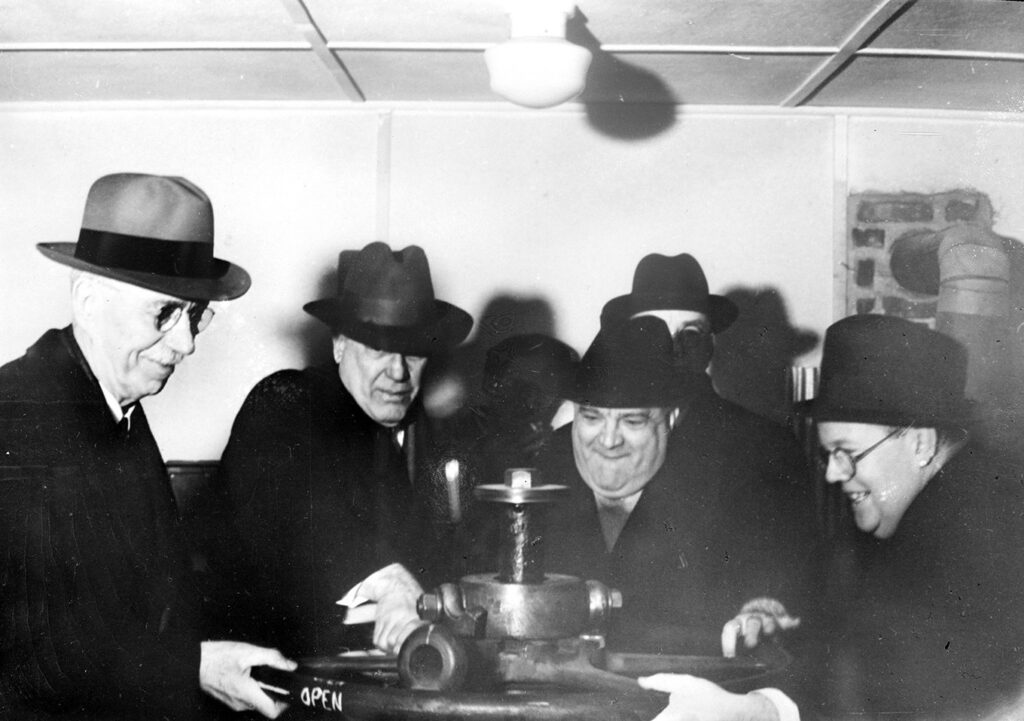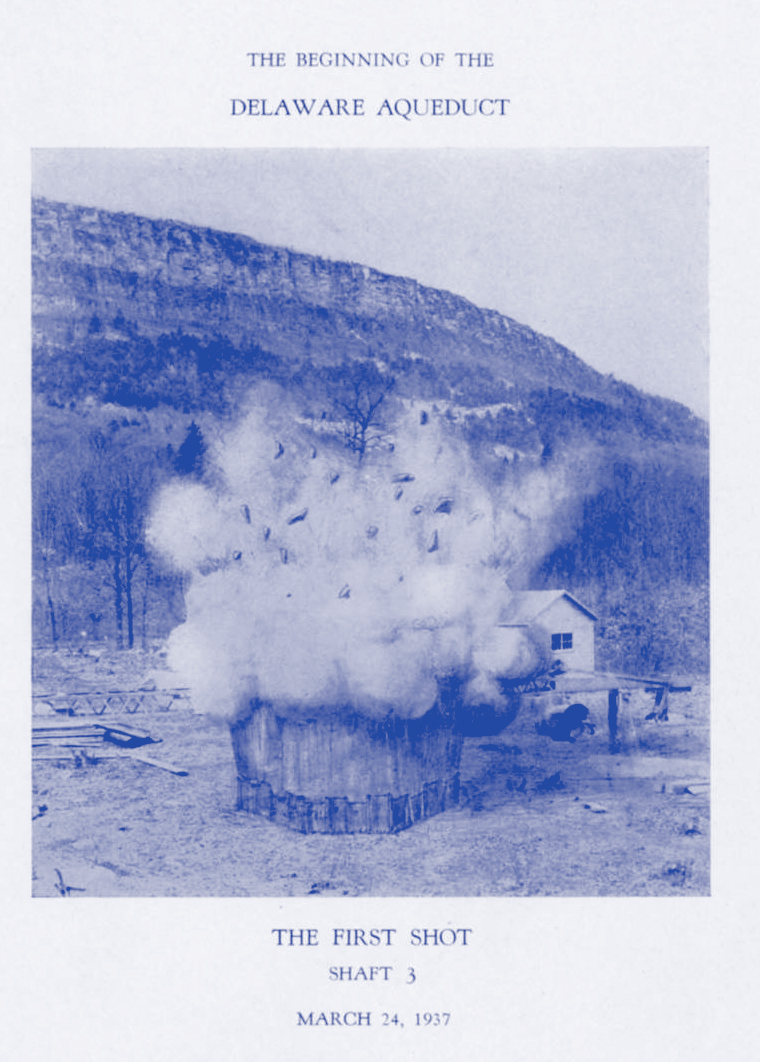Aqueducts
Water from the Pepacton, Neversink, and Cannonsville Reservoirs flows to the Rondout Reservoir by gravity via three tunnels, all together spanning 75 miles, and all significant infrastructure projects in themselves. The combined waters are then sent to the city in one of the world’s longest continuous underground tunnels, the Delaware Aqueduct, which bridges the span of 85 miles from the Rondout Reservoir, under the Hudson River, to Hillview Reservoir in Yonkers.
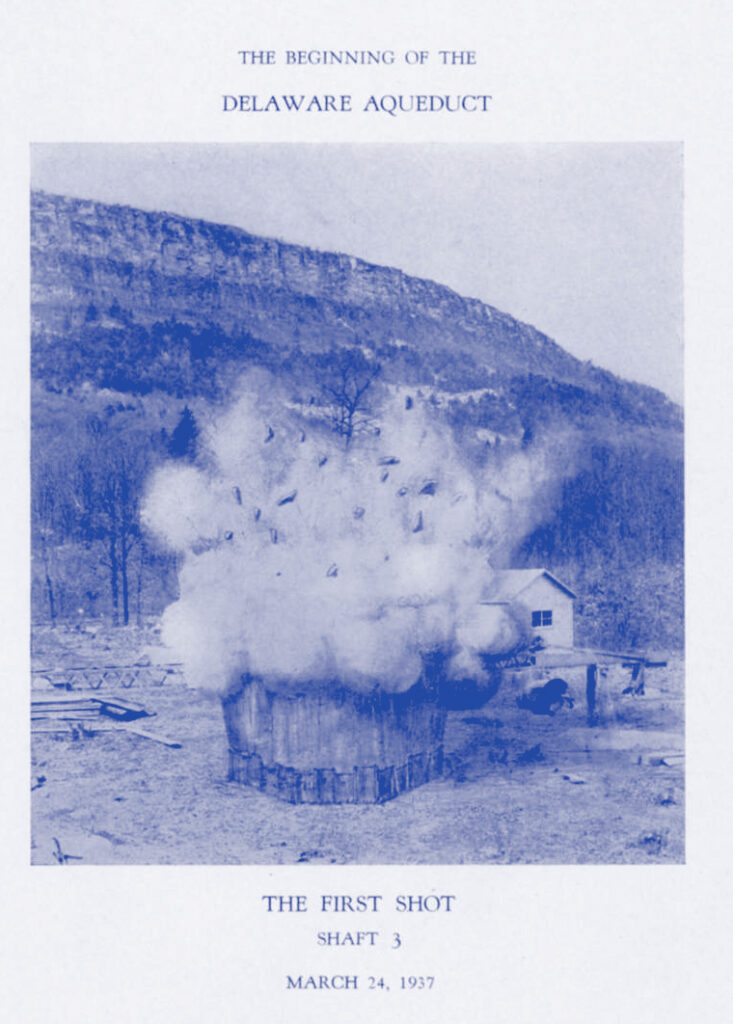
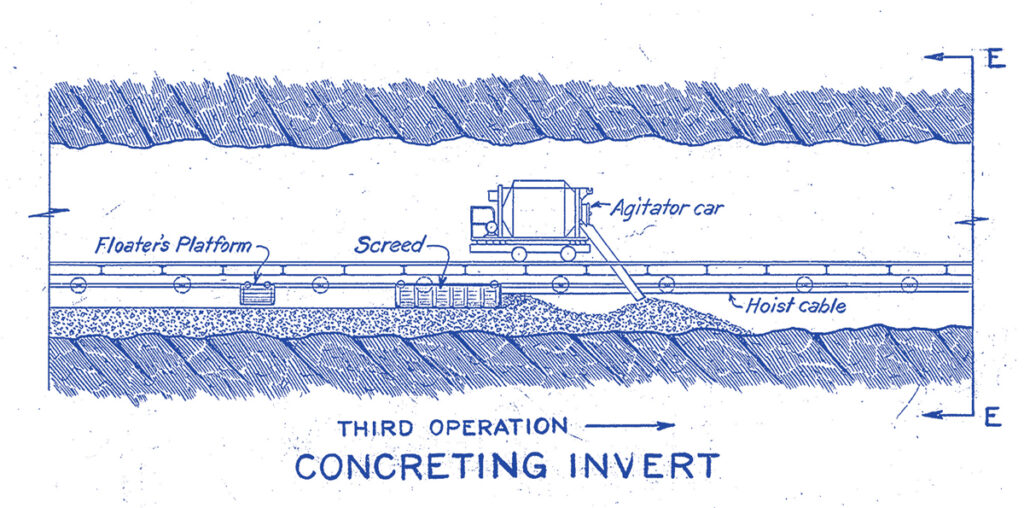
“The Delaware Aqueduct, a circular, concrete-lined tunnel 13.5 to 19.5 in diameter, stretches 83.8 miles connecting the Rondout and Hillview Reservoirs. Built from 31 vertical shafts, the aqueduct is actually three distinct pressure tunnels driven through bedrock at depths ranging from 300 to 1,550 feet below the surface.”
— From Liquid Assets by Diane Galusha
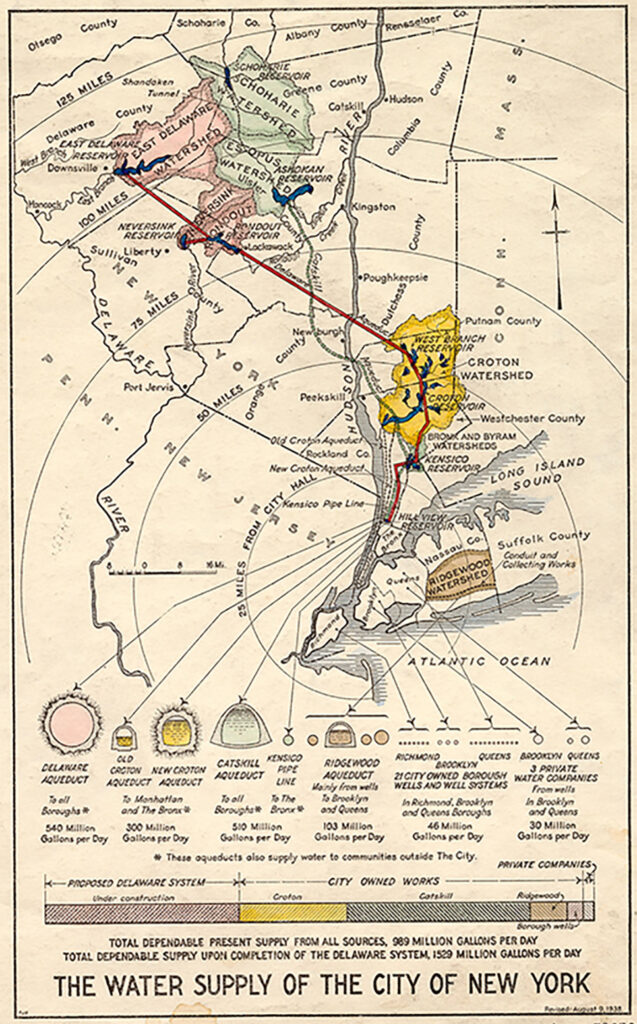
The Neversink, East Delaware, West Delaware Tunnels carry water to the Rondout Reservoir, where water from the Delaware watershed collects before entering the Delaware Aqueduct.. From there, the Delaware Aqueduct carries water southeast to reservoirs in the Croton region before arriving in New York City. The three sections of the Delaware Aqueduct are the Rondout-West Branch Tunnel, the West Branch-Kensico Tunnel, and the Kensico-Hill View Tunnel.
Geology is really important in planning tunnels, so the Board of Water Supply investigated and documented it carefully. This photograph of a waterfall in Ulster County was taken to show the black shale and sandstone beds of the Hudson River formation between two shafts of the Delaware Aqueduct. September 16, 1938.
– NYC Water on Flickr
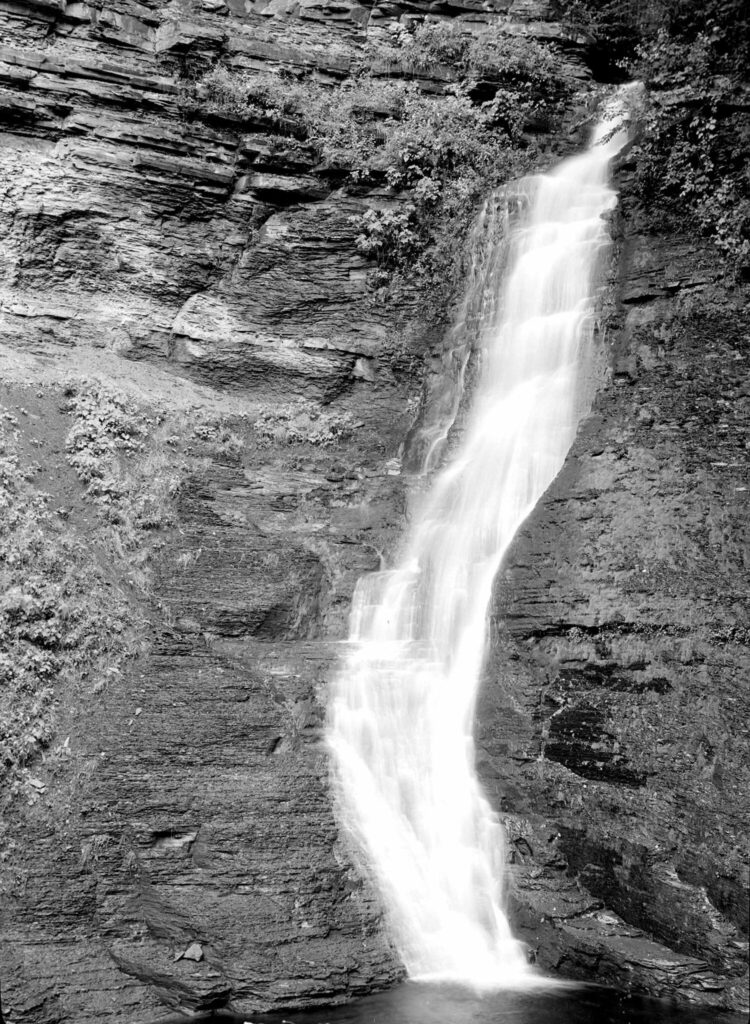
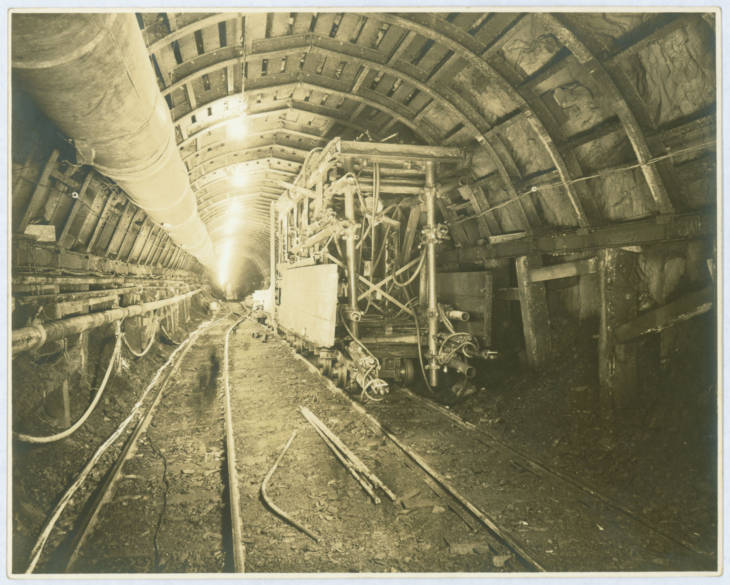
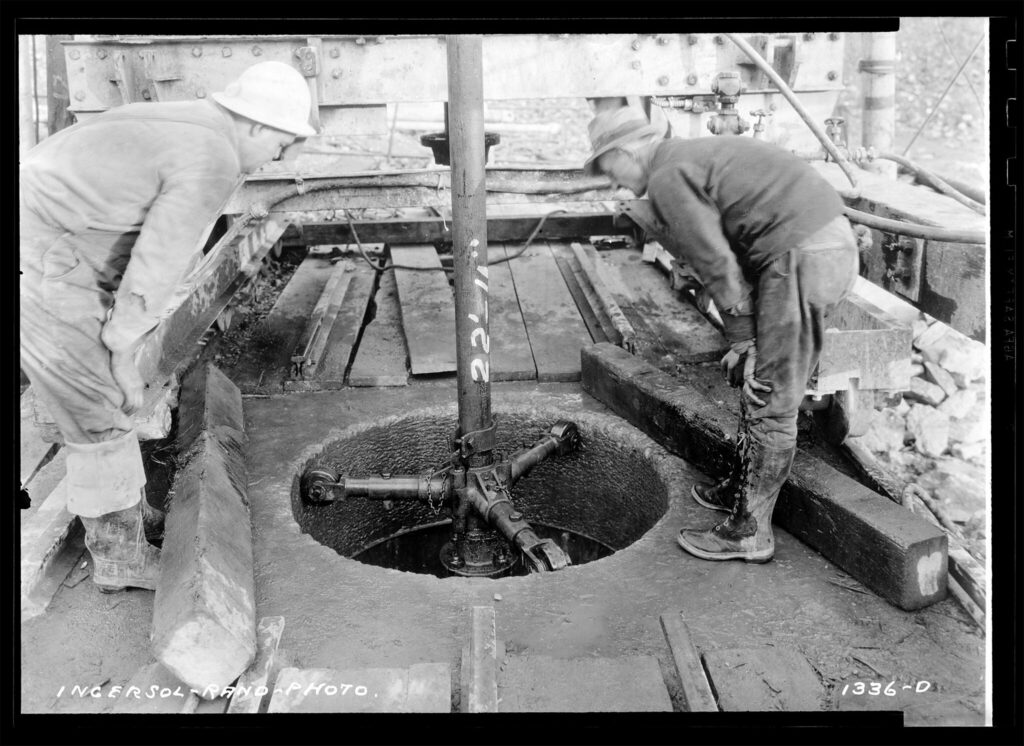
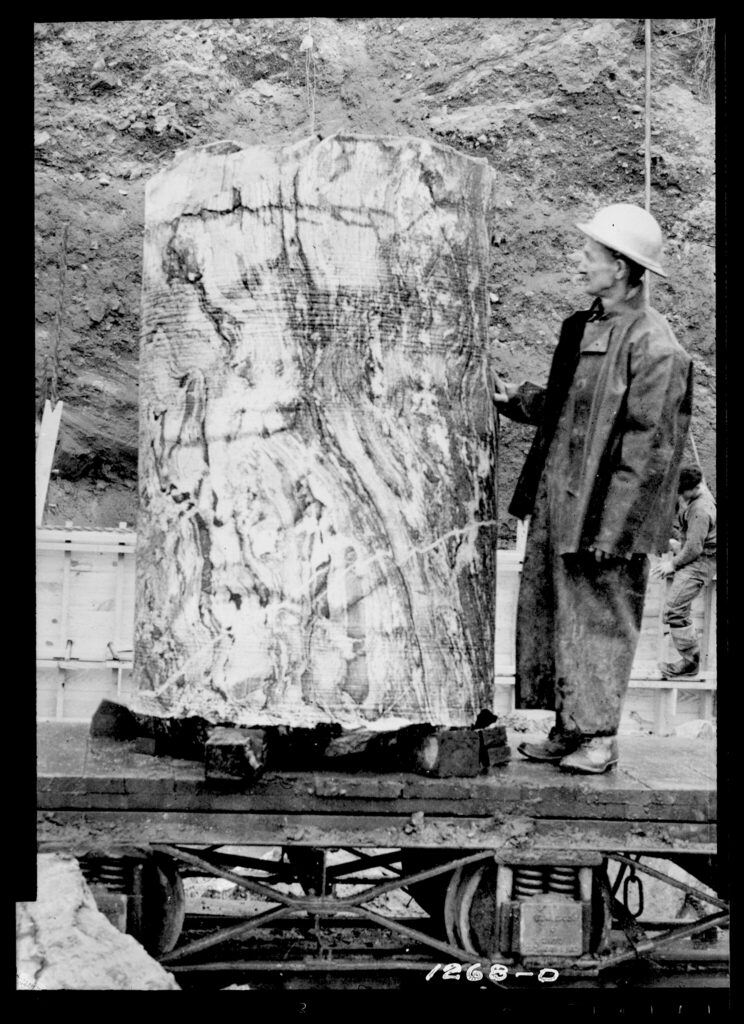
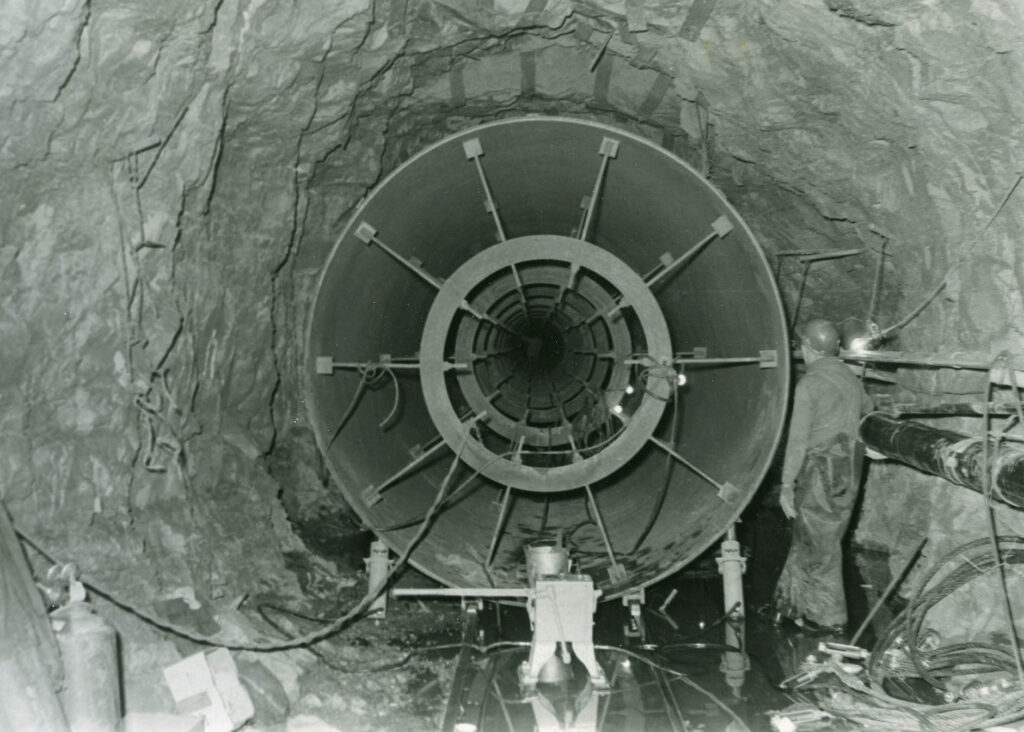
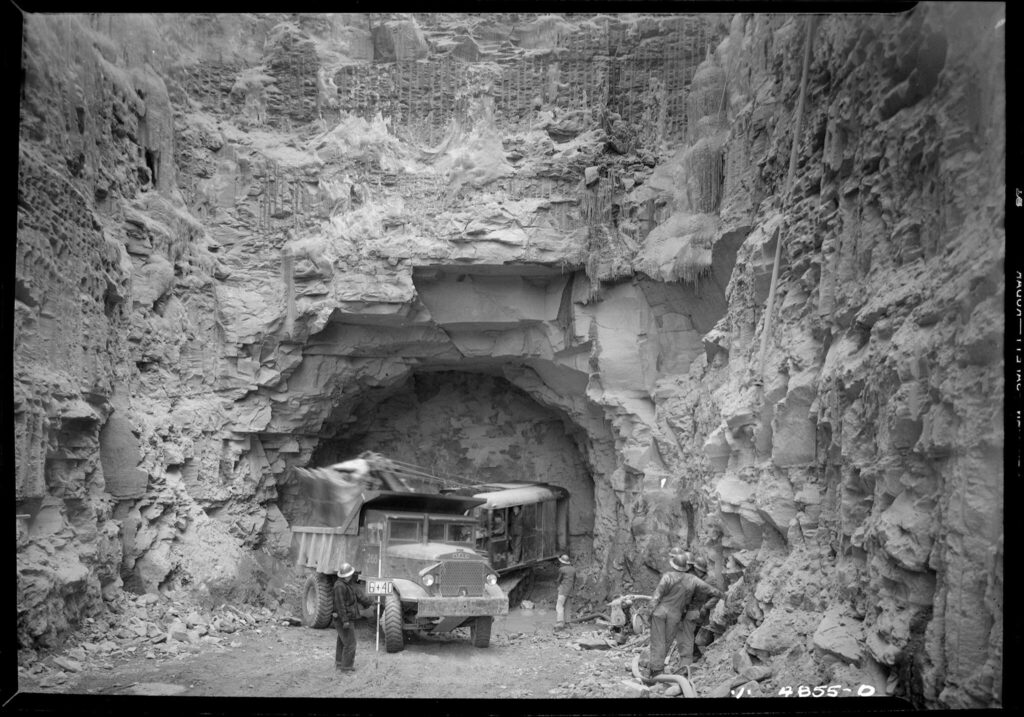
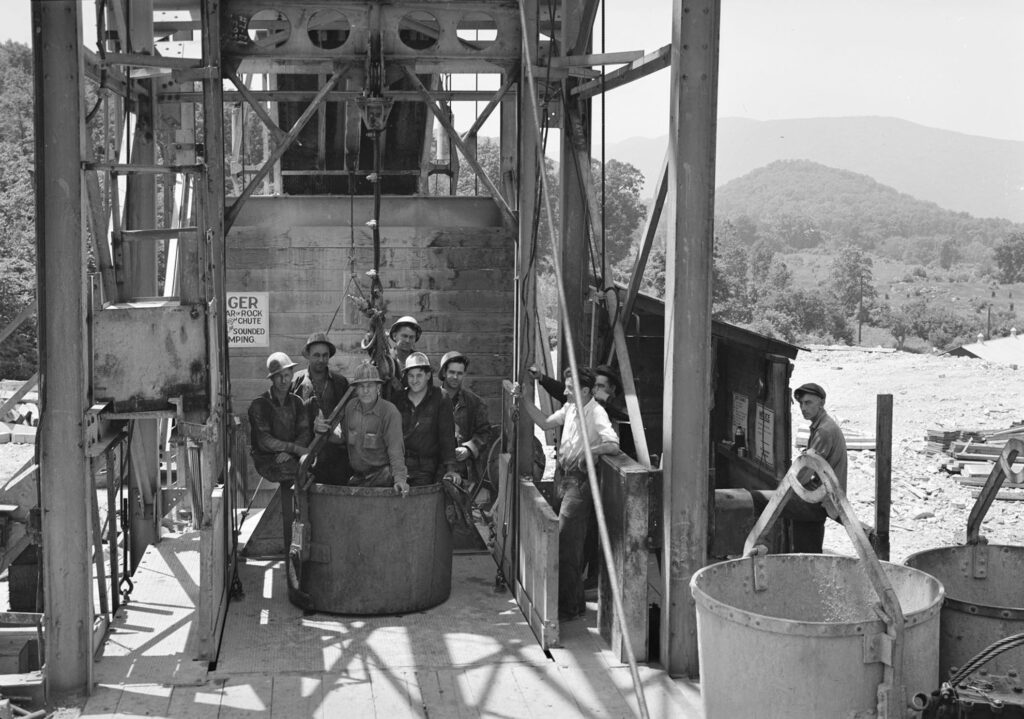
“In contrast to earlier aqueduct and reservoir projects, contractors did not maintain work camps for laborers, who were now able to drive to work and so lived or boarded independently in neighboring communities… Another difference between the Delaware Aqueduct and earlier projects was its speed.”
— From Liquid Assets by Diane Galusha
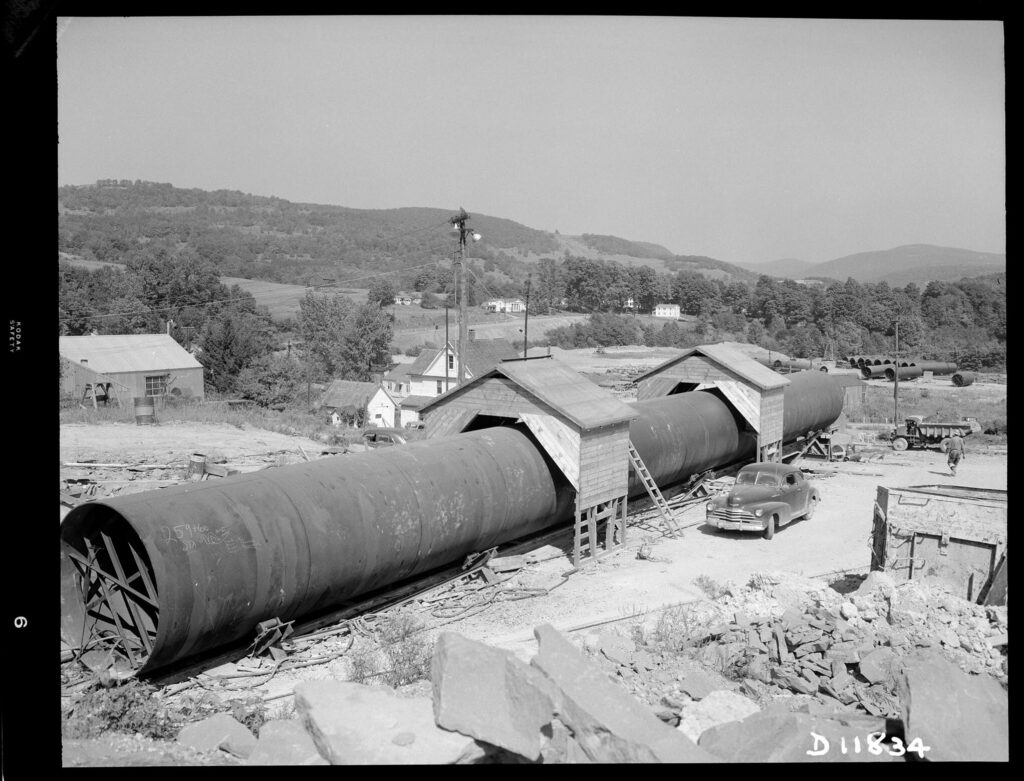
The Board of Water Supply intended to embark on the construction of the Delaware Aqueduct by 1932, but lost significant funding for the project during the height of the Great Depression. The enormous impact on the City’s finances halted significant work on the project until 1936. Just five years later, there was a new national crisis that halted progress on the waterworks.
“Most of the aqueduct was driven, and much of it concrete, by 1941. But progress on the Rondout Reservoir, and completion of the aqueduct, slowed considerably with the approach of U.S. participation in [WWII]… Users of essential construction materials were given preference ratings according to their relative importance to defense, public safety, and the country’s welfare… The [Board of Water Supply] suspended much of its bidding and construction activity for the duration of the war.”
— From Liquid Assets by Diane Galusha.
